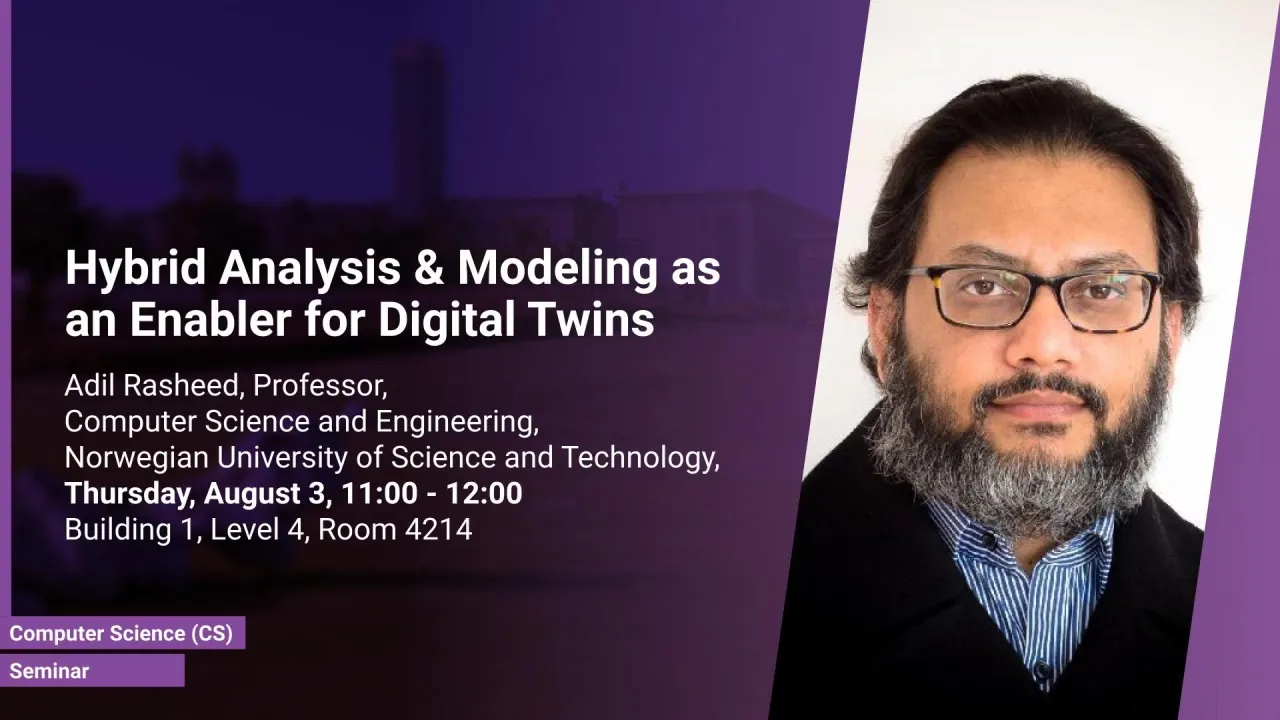
Hybrid Analysis and Modeling as an Enabler for Digital Twins
- Prof. Adil Rasheed, Computer Science and Engineering, Norwegian University of Science and Technology
B1 L4 R4214
During this talk, we will delve into a new paradigm in modeling, called Hybrid Analysis and Modeling, which has the ability to combine the best of both the physics-driven and data-driven worlds, while eliminating their weaknesses. This approach has shown remarkable utility in the context of digital twin technology and will be demonstrated through a lab-scale experimental setup, mimicking building energy modeling.
Overview
Abstract
A digital twin is a virtual representation of a physical asset or process, powered by data and simulators, enabling real-time prediction, optimization, monitoring, control, and informed decision-making. To better understand the capabilities of digital twins, we have introduced a scale ranging from 0 to 5 (0 standalone, 1 descriptive, 2 diagnostic, 3 predictive, 4 prescriptive, 5 autonomous). There is an increasing interest in developing autonomous digital twins. However, building highly capable digital twins requires a multitude of enabling technologies such as communication technologies, standards, models, and controllers, all working seamlessly together. During this talk, we will delve into a new paradigm in modeling, called Hybrid Analysis and Modeling, which has the ability to combine the best of both the physics-driven and data-driven worlds, while eliminating their weaknesses. This approach has shown remarkable utility in the context of digital twin technology and will be demonstrated through a lab-scale experimental setup, mimicking building energy modeling.
Brief Biography
Adil Rasheed is a Professor in the Department of Engineering Cybernetics at the Norwegian University of Science and Technology. There, he works to advance the development of novel hybrid methods that combine big data, physics-driven modeling, and data-driven modeling in the context of real-time automation and control. In addition, he also holds a part-time Senior Scientist position in the Department of Mathematics and Cybernetics at SINTEF Digital, where he previously served as the leader of the Computational Sciences and Engineering group from 2012 to 2018. His contributions in these roles have been the development and advancement of both the Hybrid Analysis and Modeling and Big Data Cybernetics concepts. Over the course of his career, Dr. Rasheed has been the driving force behind numerous projects focused on different aspects of digital twin technology, ranging from autonomous ships to wind energy, aquaculture, drones, business processes, and indoor farming. He is currently leading the Digital Twin and Asset Management-related work in the FME Northwind center.